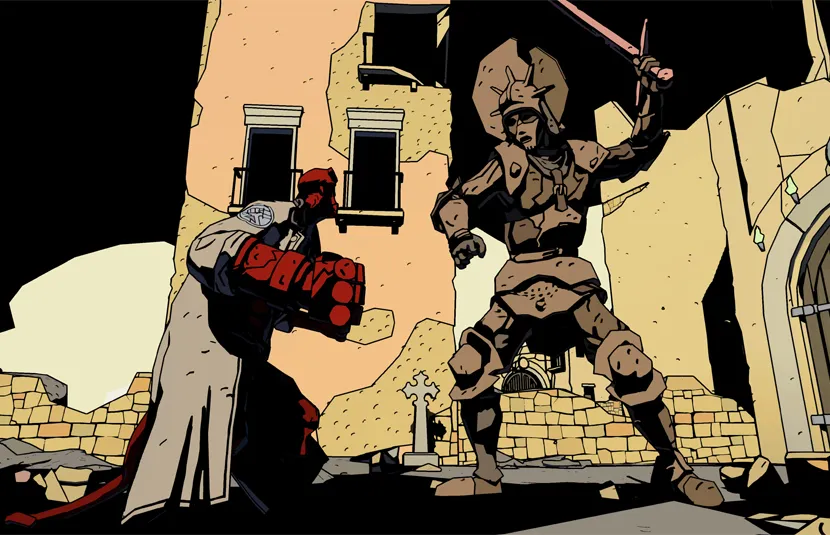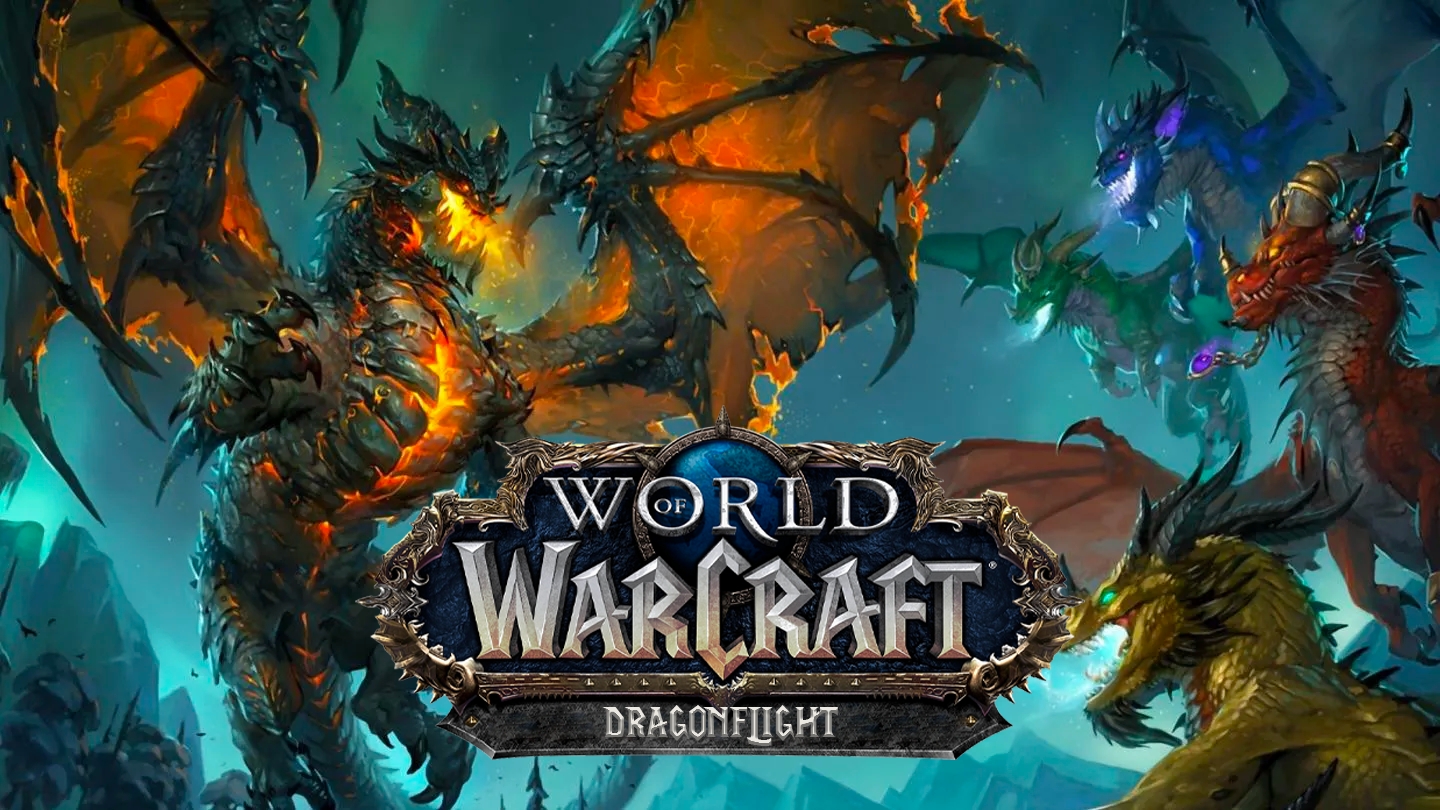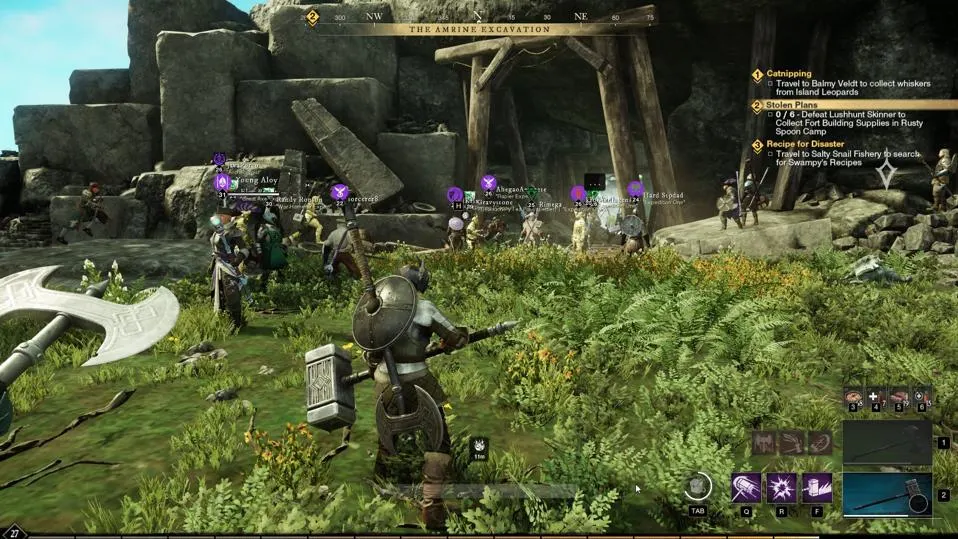Introduction to Hellboy: Web of Wyrd
“Hellboy: Web of Wyrd” brings Mike Mignola’s iconic comic book character to life in a roguelite action-adventure game. As a fan of the Hellboy series, the anticipation for a game adaptation that captures the essence of the comics was high. “Web of Wyrd” aims to deliver an experience that blends the distinctive art style, storytelling, and action that fans have come to love. This article delves deep into the game’s visual appeal, plot, gameplay mechanics, and overall reception, offering a thorough review and answering common questions about the game.
Visual Appeal and Authenticity
Capturing the Hellboy Aesthetic
One of the standout features of “Hellboy: Web of Wyrd” is its visual design. The game successfully translates the bold lines, flat shades, and low-detail faces from the comics into a three-dimensional world. The Baroque-style shadows and lighting are particularly effective, creating a gloomy atmosphere that perfectly matches the tone of the Hellboy universe. The environments, from the haunting halls of the Butterfly House to the twisted landscapes of the Wyrd, feel like they’ve been lifted straight from Mignola’s artwork.
Character Design and Voice Acting
The character design in “Web of Wyrd” stays true to the source material, with Hellboy himself being a perfect representation of his comic book counterpart. Voiced by the late Lance Reddick, Hellboy’s smooth and precise cadence adds a new dimension to the character, though it may take some time for fans to adjust from Ron Perlman’s iconic portrayal. The supporting cast, while missing some key characters like Liz Sherman and Abe Sapien, still manages to capture the spirit of the BPRD team.
Plot and Narrative Depth
A Capable Yet Unremarkable Story
“Web of Wyrd” offers a plot that fits well within the Hellboy universe. The BPRD sets up shop in the haunted Butterfly House, working to uncover the secrets of the Wyrd, a parallel dimension built on the memories of old fables and folklore. While the game captures the smart and punchy dialogue from the comics, it falls short of delivering the introspective and meaningful moments that make Hellboy stories truly special. The narrative feels more like a series of action-packed episodes rather than a cohesive and impactful story arc.
Setting and Atmosphere
The Wyrd is divided into four levels, each with a distinct theme such as a Mediterranean kingdom or a shadowy English forest. These environments are beautifully crafted, with an appropriately moody and chaotic tone. However, the exploration aspect is somewhat lacking, as the procedurally generated levels tend to feel repetitive and fail to offer substantial discoveries after the initial runs.
Gameplay and Combat Mechanics
Engaging Yet Repetitive Combat
The combat in “Web of Wyrd” is simple and fun, aligning well with Hellboy’s brute force style. Players mix light and heavy attacks to wear down enemies’ toughness, making them vulnerable to permanent damage. The kinetic sound and visual design of each punch make the combat feel satisfying. However, the lack of challenging enemies quickly makes the fights feel repetitive. Even the mooks, designed to distract and attack from off-screen, provide little actual challenge.
Lack of Challenge and Difficulty
“Web of Wyrd” is notably the easiest rogue-lite game many players have encountered. The absence of difficulty settings or ways to amp up the challenge means that even basic offensive strategies are highly effective. This lack of challenge diminishes the overall excitement and satisfaction of mastering the game’s combat mechanics.
Exploration and Replayability
Procedurally Generated Levels
While the procedurally generated levels provide some variety, they fail to maintain interest over multiple runs. Each world within the Wyrd features a different theme, but the special rooms and events quickly become familiar. This lack of novelty in exploration undermines the roguelike element, as players have little motivation to thoroughly explore each map.
Upgrades and Progression
Between runs, players can spend currency earned during their journeys to upgrade Hellboy’s equipment and stats. The Butterfly House, which serves as the hub, opens new doors and areas as players progress. However, the changes in the hub are minor, and the upgrades feel insufficient to significantly alter gameplay strategies or provide a fresh experience in subsequent runs.
Combat Dynamics and Tools
Weapons and Abilities
Hellboy has access to a variety of weapons and abilities that can be customized and upgraded. Tools like the Good Samaritan pistol or a dagger that bypasses enemy toughness add strategic depth to the combat. Buffs and power-ups found during runs can enhance specific tools, such as adding a fear effect to ranged attacks or increasing damage in a chain of fist attacks. Despite these options, the overall lack of challenging enemies means that these strategic elements are underutilized.
Enemy Variety and Behavior
The enemies in “Web of Wyrd” are well-designed and fit the Hellboy aesthetic, but their behavior is predictable and lacks aggressiveness. Special attacks from enemies, such as clouds of bats, are easy to avoid and do not pose a significant threat. This results in combat scenarios that are fun but ultimately too easy, failing to push players to adapt or improve their strategies.
Conclusion: Missed Opportunities
Faithful Yet Flawed Adaptation
“Hellboy: Web of Wyrd” excels in its visual representation and capturing the essence of the Hellboy universe. The game’s aesthetic, character design, and voice acting are commendable and provide a genuine Hellboy experience. However, the game falls short of delivering a challenging and engaging roguelike experience. The combat, while initially enjoyable, becomes repetitive due to the lack of difficulty. The exploration aspect also suffers from repetitive level design and insufficient rewards for thorough exploration.
Final Thoughts
For fans of Hellboy, “Web of Wyrd” is worth experiencing for its faithful adaptation of the beloved comic book series. The game offers a fun and visually stunning adventure, but its shortcomings in challenge, exploration, and narrative depth prevent it from reaching its full potential. As a roguelike, it fails to provide the replayability and satisfaction that fans of the genre expect. Despite these flaws, “Web of Wyrd” is a step in the right direction for Hellboy video game adaptations, and it leaves room for improvement in future installments.
Hellboy: Web of Wyrd Game Official Trailer by The Unfulfilled Potential Review
Frequently Asked Questions (FAQs): About Hellboy: Web of Wyrd
Q1: What is Hellboy: Web of Wyrd?
“Hellboy: Web of Wyrd” is a roguelite action-adventure game based on Mike Mignola’s Hellboy comic book series. The game features procedurally generated levels, engaging combat, and a story that fits within the Hellboy universe.
Q2: Who voices Hellboy in the game?
A: Hellboy is voiced by the late Lance Reddick, whose smooth and precise cadence adds a unique flavor to the character.
Q3: How faithful is the game to the Hellboy comics?
A: The game is highly faithful to the Hellboy comics in terms of visual design, character representation, and dialogue. The art style and atmosphere closely mimic the aesthetic of the comics.
Q4: Is the game challenging?
A: “Hellboy: Web of Wyrd” is notably easy for a roguelite game. The lack of challenging enemies and difficulty settings means that even basic strategies are effective throughout the game.
Q5: How long is a typical run in the game?
A: A typical run through the Wyrd takes around 20 minutes, making the game suitable for short play sessions. However, the replayability is limited due to repetitive level design and lack of challenge.
Q6: What are the main gameplay mechanics?
A: The gameplay revolves around combat and exploration. Players use a mix of light and heavy attacks, dodge and block enemy attacks, and explore procedurally generated levels. Upgrades and buffs can be applied to weapons and abilities between runs.
Q7: Does the game offer any post-game content?
A: After completing the main story, players can continue running through the Wyrd with modified settings to increase enemy strength or randomize equipment. However, these adjustments do not significantly change the gameplay experience.
Q8: What are the main strengths and weaknesses of the game?
A: The main strengths of “Hellboy: Web of Wyrd” are its visual design, faithful adaptation of the Hellboy universe, and satisfying combat mechanics. The main weaknesses are the lack of challenge, repetitive level design, and insufficient narrative depth.
Q9: Is “Hellboy: Web of Wyrd” worth playing for fans of the comics?
A: Yes, fans of the Hellboy comics will appreciate the faithful adaptation and visual representation of the Hellboy universe. However, they should be prepared for a relatively easy and repetitive gameplay experience.
Q10: Can new players enjoy the game without prior knowledge of Hellboy?
A: New players can enjoy the game without prior knowledge of Hellboy, as the story and characters are accessible. However, those unfamiliar with the comics may not fully appreciate the game’s visual and narrative references.
Q11: What future improvements could be made to the game?
A: Future improvements could include adding more challenging enemies, increasing the variety and complexity of procedurally generated levels, and enhancing the narrative depth to include more introspective and meaningful moments.
Conclusion
“Hellboy: Web of Wyrd” is a visually stunning game that faithfully captures the essence of the Hellboy comics. While it offers enjoyable combat and a compelling aesthetic, its lack of challenge, repetitive level design, and insufficient narrative depth prevent it from reaching its full potential. Fans of Hellboy will find much to appreciate in this adaptation, but those seeking a deeply engaging roguelite experience may find it lacking. Despite its flaws, “Web of Wyrd” is a solid entry in the Hellboy video game adaptations and sets a foundation for potential future improvements.



